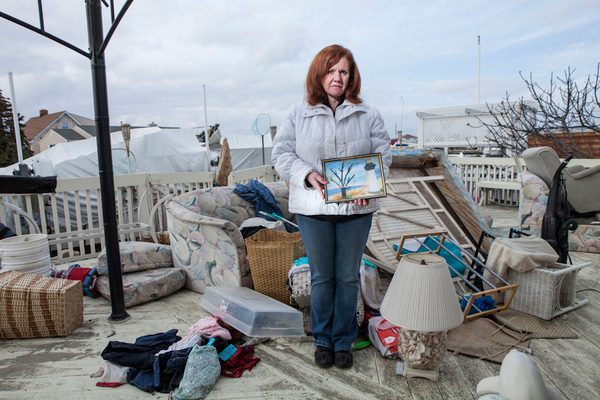
How we rebuild Shore homes and businesses may be as critical as where. For properties potentially threatened by rising waters, the use of pilings is considered essential. “You have two choices in a flood zone,” says Julie Rochman, president of the Insurance Institute for Business and Home Safety. “One is to elevate and the other is to move.” There are several ways to elevate, but one of the best for areas subject to breaking waves and storm surge is with open foundations such as pilings sunk deep in the ground that raise the structure above the expected flood level.
Susan Rocco lives year-round in the Chadwick Beach section of Toms River. Her house, a renovated summer bungalow built on concrete blocks, is two blocks from Barnegat Bay and two blocks from the ocean. When she was allowed to return to it after evacuating for the storm, there was extensive water damage and mold inside. The house needs a total renovation, she says. She intends to rebuild—on 3- to 5-foot pilings.
Building on piles isn’t simple. “The required embedment depth of the piles is subject to a host of variables, including design, wind speed, pile spacing, the size of the piles, bracing and the height of elevation,” says Rochman.
Elevating existing structures isn’t cheap, either. According to engineer Kevin Sommons, it can cost up to $80,000 to move or lift a house. A new foundation—not including any necessary changes to plumbing, electrical, and heating and cooling systems—can run from $80,000 to $150,000.
Additionally, to make a house wind resistant, Rochman advises, it needs hurricane-proof windows and doors. The roof should be strapped to the walls, and the walls strapped to one another and to the foundation.
In response to Sandy, Shore towns may strengthen building codes to make new and rebuilt structures more hurricane resistant, and insurance companies—which are sure to raise rates—may require homeowners and businesses to include significant storm protections to get the most affordable rates.
If only the wealthy can afford these increased expenses, million-dollar homes could replace summer bungalows, and high-end shops and national chains might drive out mom-and-pop businesses. “We could lose the character of the Shore through gentrification,” says the Sierra Club’s Jeff Tittel.
Governor Christie has raised the possibility of legislation that would let municipalities reassess properties destroyed in the storm; in many cases the land could be valued at far more than the structure that once stood there. A large number of Shore residents may have no choice but to sell to developers eager to replace rows of bungalows with McMansions or high-rise condos. One way towns can spare residents that fate, Tittel says, is to enact local zoning regulations that limit the size of buildings.
Click on the links below to read more Hurricane Sandy recovery stories:
Sea Change: Post-Sandy Rebuilding
The post-Sandy rebuilding is about to begin. How will the lessons learned change the face of our Shore?
Building Better Boardwalks: How Asbury’s Modern Boardwalk Withstood the Storm
Here’s how Asbury Park did it—largely sparing its popular promenade from devastating damage.
The Hudson Challenge: Are Critical Infrastructure Upgrades Overdue?
On Jersey’s Gold Coast, aging infrastructure can no longer be ignored.
Comfort in Numbers: Life After Sandy
Her Bay Head home battered by Sandy, our home & garden editor learns to roll with the punches.



